Top 6 Personalized Recommendations Strategies [Must Try]

Do big brands like Amazon, Netflix, or Spotify have the magical power, as they always suggest things we’re interested in? Well, that’s the power of personalized recommendations!
Personalized recommendations have become the most necessary feature of eCommerce websites. It analyzes the browsing patterns and purchase histories of the shoppers and sends personalized product recommendations, which helps increase both; repeat purchases and customer loyalty.
In this blog, we’ll review personalized recommendations, and their benefits, and will discuss some expert-approved strategies to increase sales numbers.
Are you ready to take the benefits of personalized product recommendations and provide a customer experience similar to that of big brands?
Let’s dive in!
What are Personalized Recommendations?

Personalized recommendations are the dynamic recommendations an eCommerce website offers that are unique to each visitor/customer, depending on their browsing behavior, and user profile. For example, You bought a mobile online, and right after placing an order your screen has a pop-up of the brand new phone case, which is an exact match for your phone.
It’s nothing but a personalized recommendation. And these scenarios have become so familiar to provide a better customer experience, encourage repeat purchases, and boost brand loyalty.
How Personalized Product Recommendations Work?
You must be thinking them to be magic. But it’s a noble science.
Machine learning algorithms brought personalized recommendations to reality. They use a variety of systems (also known as recommendation engines) to analyze user interactions, behavior, and preferences on the website.
Some of those most used systems are:
- Collaborative filtering systems
- Content-based filtering systems
- Memory-based collaborative filtering
But, how exactly do they accomplish this? They usually check customer information to find answers to the below questions.
- What are the search queries?
- What are the previous purchases?
- What items are viewed?
- How much time is spent on the website?
- What is browsing history?
- Which other items could complement current interests?
- What other products did shoppers buy with the items the user is interested in?
- What is in the shopping cart, and is the cart abandoned?
- Has any information been shared about a product on social media?
- What is their demographic?
After finding answers to the above questions, the algorithm creates an entire user profile showing their interests. Later, it takes all that data to generate relevant recommendations for each customer, making their shopping journey more personalized and fun.
Example of Personalized Product Recommendations
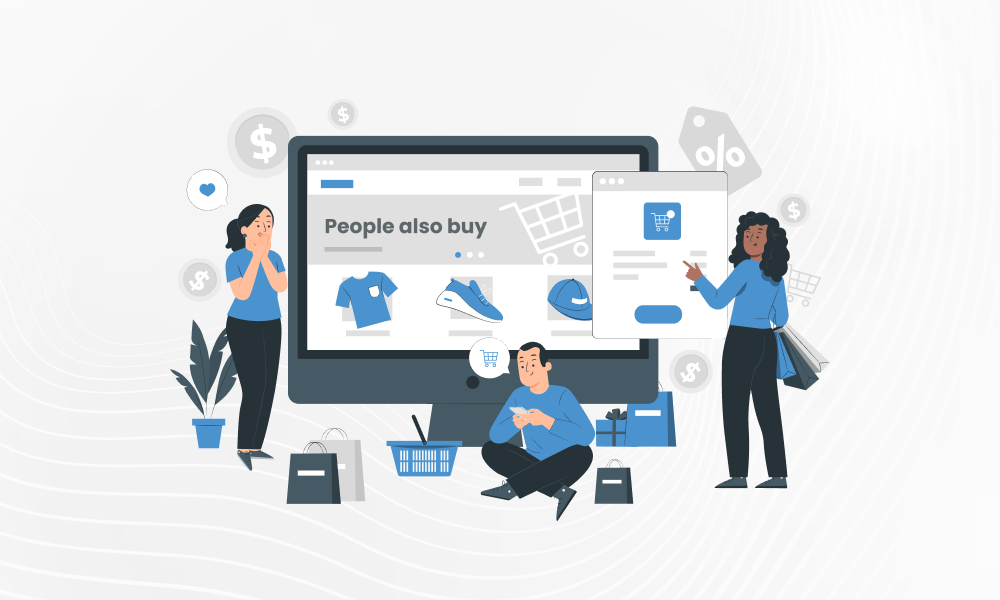
If you still have any doubts about what personalized product recommendations are, the examples below will help you clear your doubts.
- Recommending the ideal pair of shoes to match the recently purchased dress.
- Finding a new beloved book based on your user’s previous purchases.
- Implementing dynamic pricing that provides customized discounts and offers based on user behavior.
- Presenting “You may also like” product suggestions with the help of advanced machine learning methods.
- Providing personalized product recommendations based on their social media activity and interests.
- Suggest personalized meal combos based on individual customer preferences.
These types of personalized recommendations are available on most of the successful eCommerce websites. Now, let’s understand the benefits of implementing these personalized recommendations on your eCommerce store.
Benefits of Personalized Recommendations
The benefits of personalized recommendations are not limited to just one party, there are equal benefits for both merchants and customers.
And, we’ll learn each benefit for both of them.
Benefits For eCommerce Merchants
1. Improvement in Sales
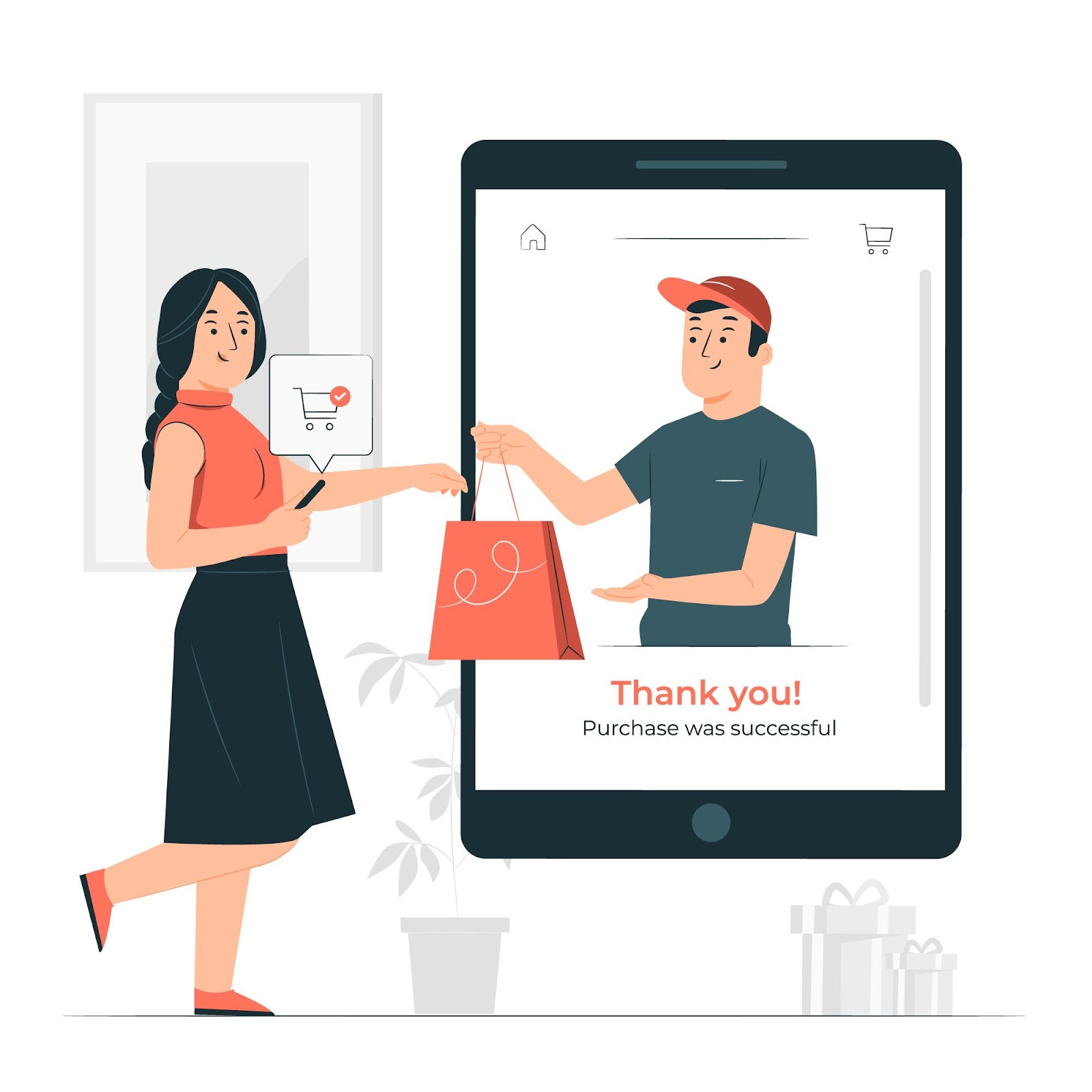
Yes, implementing personalized recommendations can help you boost sales numbers. To support this, I’ve proof: Amazon’s recommendation engine helped them increase their sales by 35%. You can also achieve similar results by suggesting relevant products to your customers.
2. Increase in Customer Retention
Customers prefer stores where they can find suitable products easily without constant research. Where personalized recommendations provide perfect product recommendations, leading to stronger customer relationships, better customer journeys, and higher customer retention.
3. Enhanced Customer Experience
Personalized experiences make your customers feel satisfied making the shopping journey effortless in your eCommerce store. This means that their overall experience of shopping with your brand will be improved.
4. Data Insights

Another benefit of implementing personalized recommendations is that it provides you with a big list of valuable customer data. This data can help you improve your business operations, decisions, product offerings, promotions, and marketing strategies.
Benefits For eCommerce Customers
1. Personal Shopping Assistant
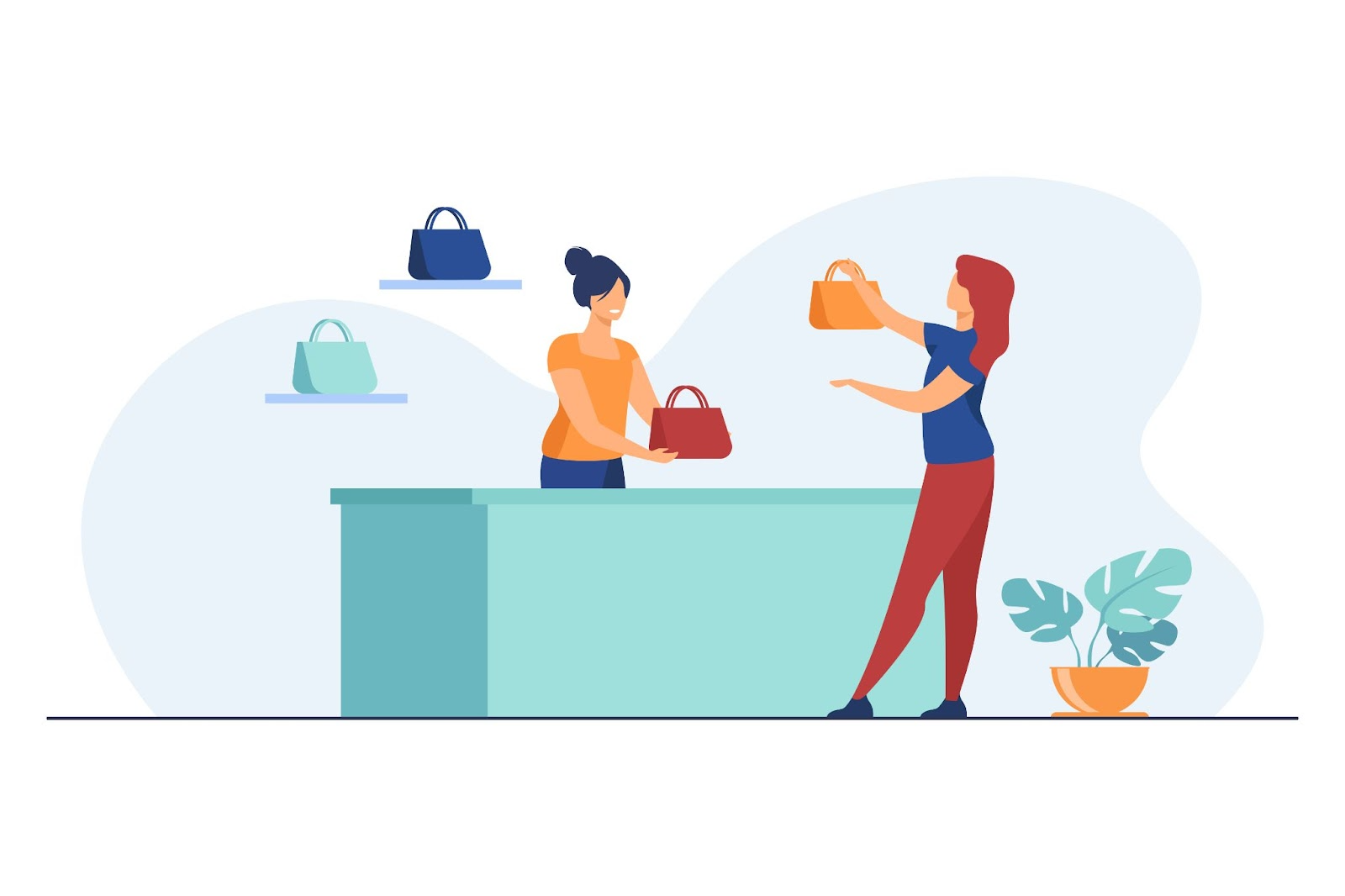
Personalized recommendations somehow act as helpful shopping partners, swiftly guiding your customers toward the most suitable products and deducting their hassle of searching through irrelevant options.
2. Boosts Satisfaction
When customers get a shopping buddy in the form of relevant recommendations, they feel valued and appreciate the efforts made by the store owner. This leads to a satisfying customer experience.
3. Saves Time
Endless product research consumes valuable time for your customer. Whereas custom product recommendations will save customers time by presenting products that align with their needs and interests.
We took all basic knowledge about personalized recommendations, how they work, some best examples, and their key benefits.
Now, let’s move forward to the main part of this blog, the strategies to implement personalized recommendations on your eCommerce website.
Top Strategies for Personalized Recommendations
Below I’ve presented cutting-edge personalized recommendation techniques and best practices to power up your eCommerce store.
Don’t miss out on any, as each of them contains the power to boost your sales and revenue.
Personalized Product Recommendations

Imagine visiting a site that lacks an option for you to choose products from “Frequently bought together,” “recommended for you,” or “Similar Products”. It would make you feel lost and question your buying decision.
In the same way, if your site’s product recommendation engine recommends relevant products that match your users’ interests, they will love it. The recommendation system knows what your user wants, and your user won’t hesitate and get indulged between the recommendations made by the engine.
Ultimately, this increases your users’ purchase intent. to achieve that, you’ll need to follow a proper strategy.
Here are some of the best-personalized product recommendation strategies to implement:
- “Frequently Bought Together” Products: You can recommend products that are commonly used with the item your customers are currently browsing. For example, Suggest a suitable phone case if a person is looking for a mobile phone.
- Recently Viewed/Purchased Products: Displaying recently viewed or purchased products will be an opportunity for users to revisit the product, increasing the likelihood of conversion. For example, display similar body care products on the home page, product page, or cart page for customers who recently showed interest in it.
- Similar Products: Suggest products that are similar to what the customer is looking for. For example, suggesting different colors, sizes, materials, price ranges, and more.
- Personalized Products Bundles: You can create personalized product bundles as per your customers buying patterns and previous purchases, to meet their needs and increase average order value. For example, suggest a product bundle containing a yoga mat, and water bottle to customers who are interested in fitness.
- Cross-Sell Products: Suggesting complementary or related products always works. For example, If they are looking for formal pants, you can suggest buying a suitable shirt along with them.
- Popular Products: You can suggest products that are in trend, are loved by a vast number of people, and have great reviews and ratings. For example, If they’re looking for a portable fan, suggest a fan from popular brands in the same niche.
- Loyalty Rewards: Based on customers’ loyalty level, you can offer them relevant products with exclusive discounts. For example; on reaching 1st level, give a 20% off on specific products that your customers are interested in.
- Wishlist Recommendation: You can recommend products that are similar to products added to customers’ wishlists. For example; when the customer has added a dress to the wishlist, you can suggest similar dresses that your customer may like.
You can place these product recommendations on various places on your website, such as; the home page, product page, checkout page, cart page, product category page, wishlist page, and more.
However, incorporate recommendations that are relevant to a specific page, and have chances to improve customer engagement.
Personalized Deals
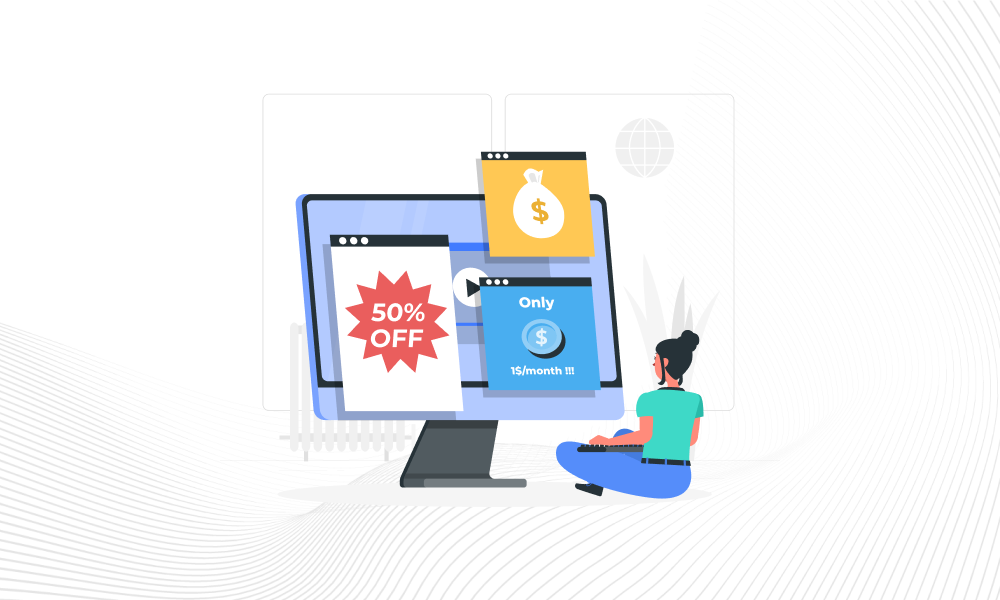
Each customer love deals and discounts. But imagine the thrill of receiving deals that are specifically made for them.
This is the ultimate way to encourage your customers for hitting the “add to cart” button.
For example; to a customer making a specific product research on your store, you can send them a pop-up containing a special deal for them. And, they’ll definitely follow the purchase process.
Here are some ideas to implement personalized deals for your eCommerce customers:
- Discount for first-time customers: You can offer special discounts or coupons to customers who are making their first purchase in your store.
- VIP Discounts: You can provide exclusive deals and discounts to your VIP customers who’ve made a certain number of purchases or have higher average order value.
- Location-based Discounts: Provide location-based discounts to increase the number of customers visit at your physical stores and encourage your customers to make a purchase.
- Email Sign-up Offers: Provide discounts to customers who’ve subscribed to your email newsletter to encourage them to make purchases and stay engaged with your store.
- Loyalty Rewards: To your loyal customers, you can provide special deals and discounts, such as; free shipping, exclusive deals, or early access to any upcoming flash sale.
- Birthday Discounts: On customers’ birthdays you can send them gift cards, or discount codes to make them feel special and encourage them to make a purchase.
- Purchase History Offers: You can send personalized discount coupons based on the customer’s shopping history. This approach will motivate them to shop more.
- Abandoned Cart Offers: You can encourage those customers who left items in their cart without making purchases by sending them personalized discount coupons through personalized emails.
Implementation of personalized offers will bring you better results as they make your customers feel valued and acknowledged. So, take a sit, brainstorm a little and create personalized deals for your customers.
Dynamic Pricing
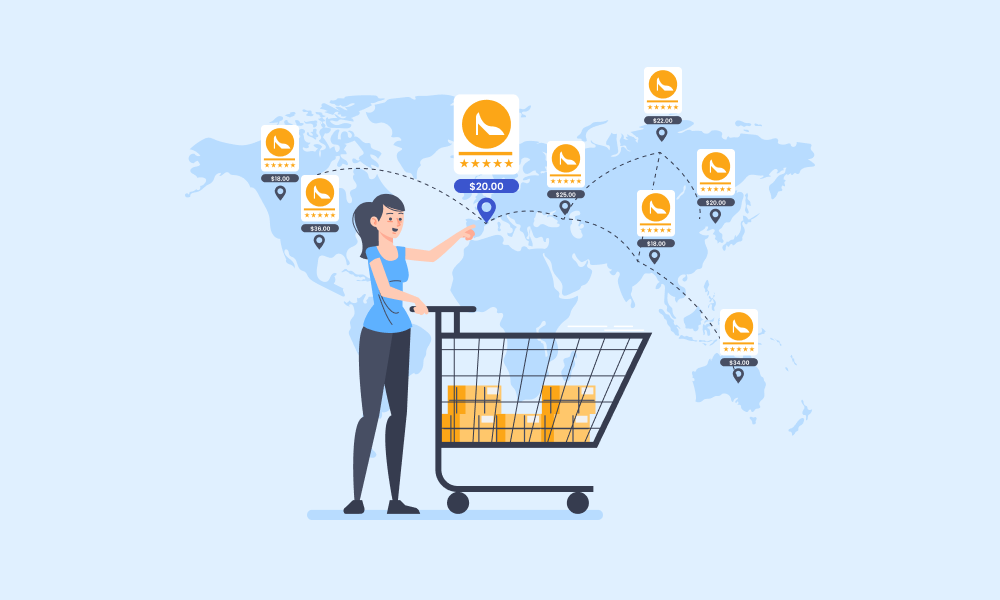
Have wondered how eCommerce stores magically change product prices whenever you visit them? It’s like they have a pricing wizard working behind the scenes.
Well, the truth is, they’re using cutting-edge machine learning algorithms to analyze the data of purchase history, competitor pricing, and market demand. Doing this helps them set prices that are perfectly personalized for each customer.
And I suggest you do the same for giving a personalized pricing experience on your online store. If you don’t know how to implement it, below I’m describing the same.
Below are some ways to implement dynamic pricing for your eCommerce store:
- Time-based Pricing: You can offer different pricing for products depending on different times of day, week, or season to reflect changes in demand and supply.
- Location-based Pricing: You can offer different pricing depending on the location, shipping destination, and local market conditions of your target customer.
- Customer-based Pricing: You can offer different pricing depending on the shopping history, loyalty level, and location of your customer.
- Cart-based Pricing: Offers personalized discounts and coupons based on the total value of items inside customers’ shopping carts to encourage them to purchase more.
- Dynamic Discounted Pricing: You can offer personalized deals and discounts based on user behavior, such as; when they add more items to their cart or left their cart abandoned.
- Tiered Pricing: You can offer personalized deals based on the number of orders, such as offering a complimentary product on larger orders.
- Dynamic Shipping Pricing: Offer various shipping options specific to the customer’s location, shipping destination, or shipping speed.
Dynamic pricing will help you optimize your eCommerce revenue while offering fair and competitive prices to your customers, relevant to specific days, product availability, and demand.
Personalized Reminder Emails
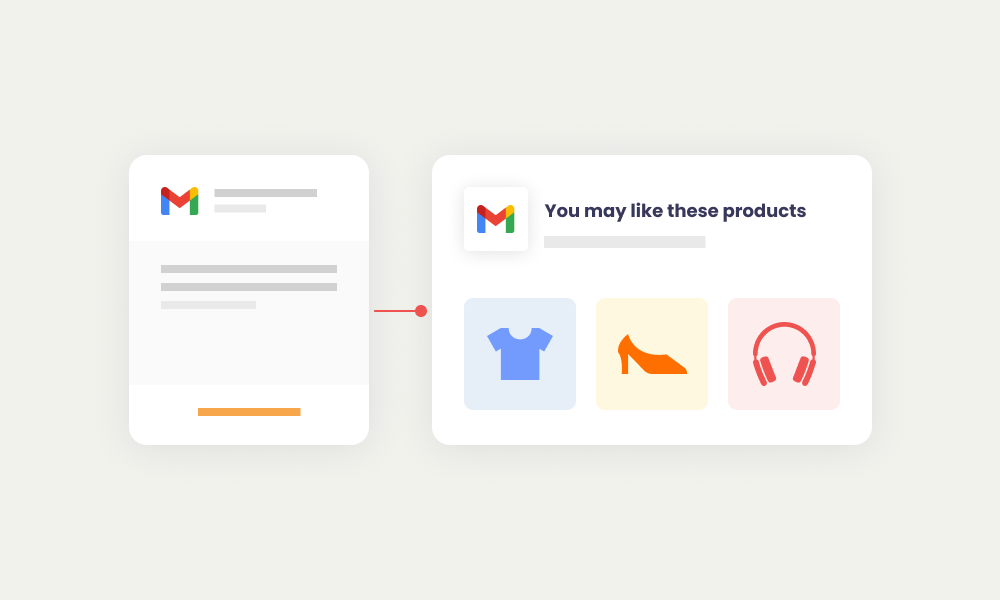
Due to a variety of reasons, sometimes customers feel overwhelmed and leave the website during shopping.
For bringing them back, you can pitch them through email, and remind them about the items they’ve left in the cart, or you can suggest personalized product suggestions and options relevant to their interest. It has a higher chance they’ll resume shopping.
And if you don’t have a better idea to bring them back, below are some ways you can make personalized reminder emails work for you.
- Abandoned Cart/Wishlist Reminder: Send a mail to a customer who abandoned the cart or added any product to the wishlist to remind them about their items, and invite them to complete a purchase. You can also add any discount to encourage them.
- Loyalty Program Reminder: For those customers who are reaching their loyalty level, you can send them personalized mail and inform them about rewards they’ve achieved and encourage them to make purchases.
- Replenishment Reminder: Mail your customer and try to convince them for repurchasing a product they previously bought from your store.
- Event Reminder: In case of any event in your store, such as a flash sale, festival sale, or any other; you can mail event details to your newsletter subscribers in the form of an invitation.
- Product Review Reminder: To customers who recently purchased a product from you, you can remind them to write their review about the product, along with a link to the review page.
- Seasonal Reminder: During the seasonal period, you can remind your customers about relevant discounts, deals, or a new variety of products.
- Birthday Reminder: On the birthday of your customer, you can wish them and send some discount coupons to use in their next purchase and make their day special.
- Subscription Renewal Reminder: When the subscription period is over, you can remind your customers to renew it with a personalized email.
- Post-Purchase Reminder: After the customer places an order, send a mail to your customer and suggest adding related products and accessories that go best with their recent purchase.
- Inactivity Reminder: If your customers haven’t placed any order in a long period, you can send them offers and discounts to encourage them for making a purchase.
There are no hidden secrets revealed, you may be also using some of these. But if not, you should implement them right today.
On-site Targeting Customers
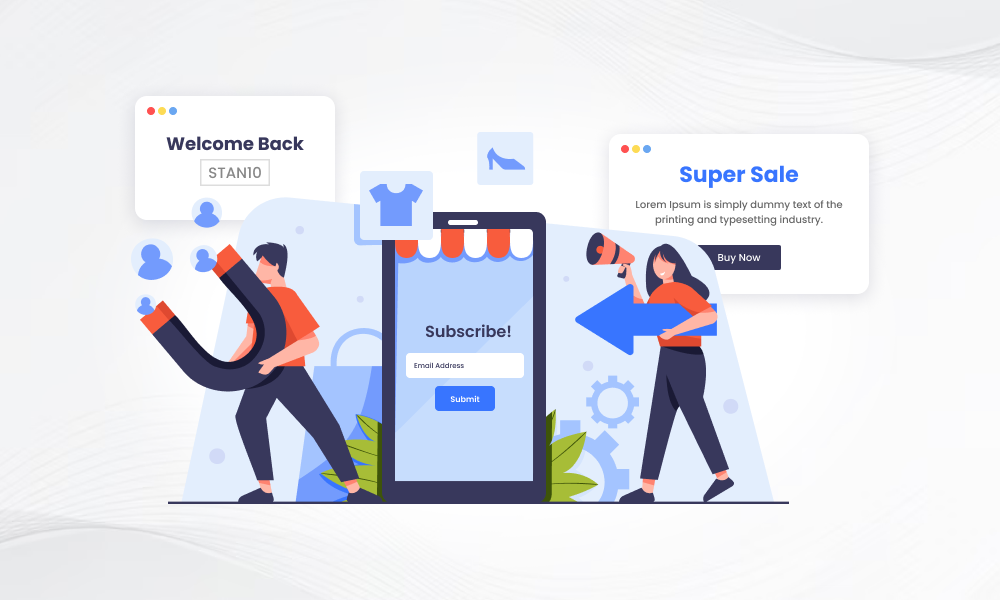
Why make extra efforts when you can give customers what they want? As all they want from you is better deals and a personalized shopping experience!
For example, when a customer spends a long time on your product pages, you can send them a pop-up including a good discount that encourages them to make a purchase. Targeting on-site customers includes customer data and their behavior patterns while shopping on your website. So, do some work on that, and start with the strategies below.
Here are some more examples of how you can target your on-site visitors:
- Exit Intent Pop-ups: To those customers who are leaving your site after researching for a long time on a specific product, offer them a better deal to encourage them to stay and make a purchase.
- In-page Pop-ups: Send a pop-up message on the product page or checkout page, that encourage customers and convinces them to make a purchase.
- Countdown Timers: You can also share offers & discounts with countdown timers for a limited time to create a sense of urgency.
- Abandoned Cart Notifications: To recover abandoned carts, you can send them notifications with discounts to motivate customers to complete their purchases.
- Live Chat: You can add a live chat option for your customers to clarify their order-related queries and more.
- Gamification: You can engage your customers with quizzes, contests, or rewards, and encourage them to make a purchase. Perhaps, you could even go a step further and consider a mobile game soft launch, and choose to grow your business through the app.
Implementing these ways to target your on-site customers will definitely help you.
Upselling and Cross-Selling
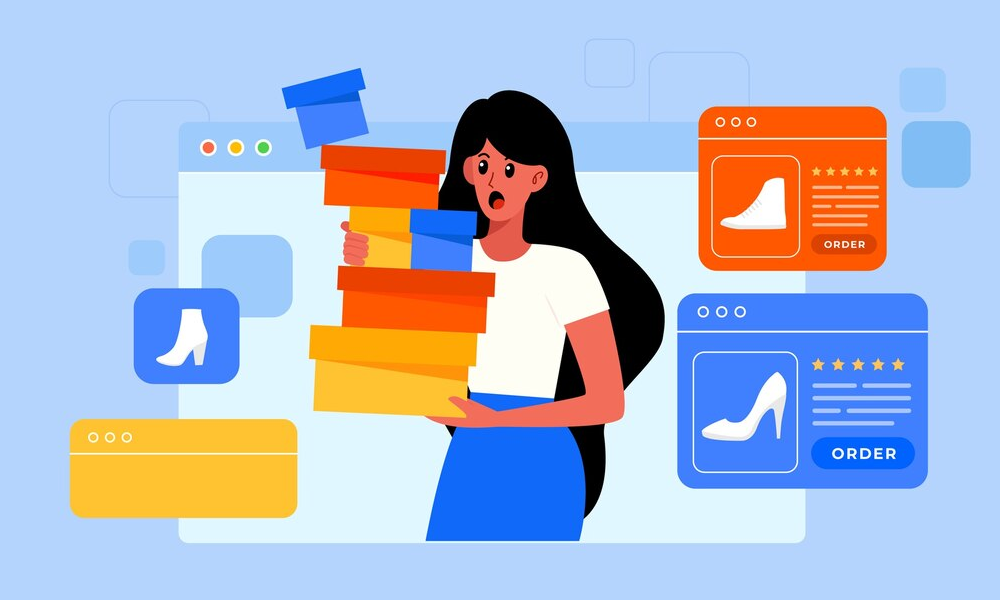
According to a study, 75% of customers expect online stores to understand their needs and expectations. By implementing up-selling and cross-selling strategies, you can recommend complementary products to your customers that align with their interests.
For example, if a customer is buying a t-shirt, you can suggest jeans and/or shoes that perfectly complement their chosen product. This not only increases customer satisfaction but also generates excitement for shopping. Ultimately, it helps you boost the average order value.
If you don’t know how to implement upselling and cross-selling strategies, here are some ideas to consider.
- Related Products: You can display related products or accessories that complement your customer’s current purchase, which can be placed whether on the product page or cart page.
- Upgrade Offers: Attract your customers by offering them an upgrade to a higher-priced or superior version of the product that they are considering purchasing.
- Customized Bundles: Allow the creation of customized product bundles, to encourage your customers for adding more items to their recent purchases.
- Cross-category Selling: Along with products from the same category, you can showcase a variety of categories, that your customer may be interested in according to their purchase history.
- Subscription Services: You can also offer subscriptions for products they purchase regularly. Such as beauty and personal care items, food and meal kits, pet supplies, health supplements, and more.
Implementing these strategies will definitely help you do something better for engaging your customers, and selling more products.
Last Words!
That’s all! We’re done with this blog, and by now, you must’ve understood the meaning of personalized recommendations, their benefits, and the strategies that can help you with their implementation.
And, I hope you’re looking to implement these strategies on your eCommerce site to avail their benefits, as they are worth every effort.
In case, if you’re left with any doubt you can contact us, or post a comment below, to get your query resolved.
Thank you for reading!






Post a Comment
Got a question? Have a feedback? Please feel free to leave your ideas, opinions, and questions in the comments section of our post! ❤️